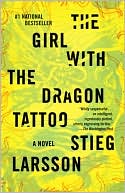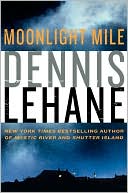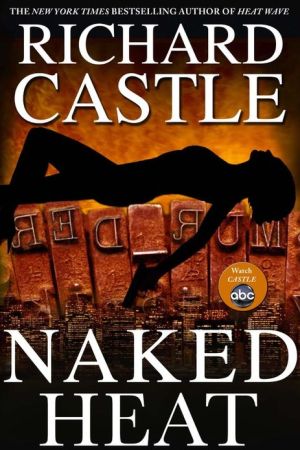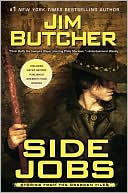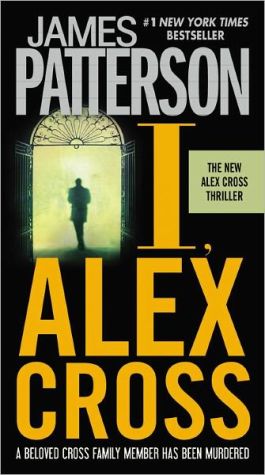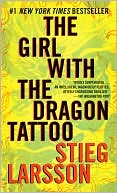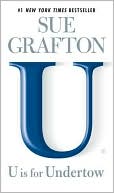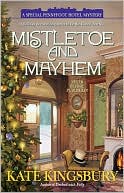The Oxford Murders
Two mathematicians must join forces to stop a serial killer in this spellbinding international bestseller\ A paperback sensation in Argentina, Spain, and the United Kingdom, The Oxford Murders has been hailed as "a remarkable feat" (Time Out London) and its author as "one of Argentina's most distinctive voices" (The Times Literary Supplement). It begins on a summer day in Oxford, when a young Argentine graduate student finds his landlady-an elderly woman who helped crack the Enigma Code...
Search in google:
Two mathematicians must join forces to stop a serial killer in this spellbinding international bestseller A paperback sensation in Argentina, Spain, and the United Kingdom, The Oxford Murders has been hailed as "a remarkable feat" (Time Out London) and its author as "one of Argentina's most distinctive voices" (The Times Literary Supplement). It begins on a summer day in Oxford, when a young Argentine graduate student finds his landlady-an elderly woman who helped crack the Enigma Code during World War II -murdered in cold blood. Meanwhile, a renowned Oxford logician receives an anonymous note bearing a circle and the words "the first of a series." As the murders begin to pile up and more symbols are revealed, it is up to this unlikely pair to decipher the pattern before the killer strikes again.The Washington Post - Rosemary HerbertDorothy L. Sayers herself could not have better characterized the denizens of a Common Room. This book may not win first-class honors, but those who love a mystery mixed with a portrait of academic life should not miss The Oxford Murders.
The Oxford Murders\ \ By Guillermo Martinez \ MacAdam/Cage Publishing\ ISBN: 1-59692-150-1 \ \ \ Chapter One\ Now that the years have passed and everything's been forgotten, and now that I've received a terse e-mail from Scotland with the sad news of Seldom's death, I feel I can break my silence (which he never asked for anyway) and tell the truth about events that reached the British papers in the summer of '93 with macabre and sensationalist headlines, but to which Seldom and I always referred - perhaps due to the mathematical connotation - simply as the series, or the Oxford Series. Indeed, the deaths all occurred in Oxfordshire, at the beginning of my stay in England, and I had the dubious privilege of seeing the first at close range. \ I was twenty-two, an age at which almost anything can still be excused. I'd just graduated from the University of Buenos Aires with a thesis in algebraic topology and was travelling to Oxford on a year's scholarship, secretly intending to move over to logic, or at least attend the famous seminars run by Angus MacIntyre. My supervisor, Dr Emily Bronson, had made all the preparations for my arrival with meticulous care. She was a professor and fellow of St Anne's, but in the e-mails we exchanged before my trip she suggested that, instead of staying in the rather uncomfortable college accommodation, I might prefer - grant money allowing - to rent a room with its own bathroom, kitchen and entrance in the house of a Mrs Eagleton, a delightful and discreet lady, she said, the widow of her former professor. I did my sums, as always a little optimistically, and sent off a cheque for advance payment of the first month's rent, the landlady's only requirement.\ A fortnight later I was flying over the Atlantic in the incredulous state which overcomes me when I travel: it always seems much more likely, and more economical as a hypothesis - Ockham's Razor, Seldom would have said - that a last-minute accident will send me back to where I started, or to the bottom of the sea, than that an entire country and the immense machinery involved in starting a new life will appear eventually like an outstretched hand down below. And yet, exactly on time, the plane cut calmly through the layer of cloud, and the green hills of England appeared, undeniably true to life, in a light that had suddenly faded, or perhaps I should say deteriorated, because that was my impression: that, as the plane went down, the light was becoming increasingly tenuous, as if it were weakening and languishing, having passed through a filter.\ My supervisor had instructed me to take the bus from Heathrow straight to Oxford and apologised several times for not being able to meet me when I arrived as she'd be in London all week at an algebra conference. Far from bothering me, this seemed ideal. I'd have a few days to wander around town and get my bearings, before my academic duties began. I didn't have much luggage, so when the bus arrived at the station I carried my bags across the square to get a taxi. It was the beginning of April but I was glad I'd kept my coat on: there was an icy, cutting wind, and the pallid sun wasn't much help. Even so, I noticed that almost everyone at the fair occupying the square, as well as the Pakistani driver who opened his taxi door for me, was in short sleeves. I gave him Mrs Eagleton's address and as we drove off I asked if he wasn't cold. 'Oh no, it's spring,' he said, waving towards the feeble sun as if this were irrefutable proof.\ The black cab advanced sedately towards the main street. As it turned left, I saw, on either side, through half-open wooden gates and iron railings, neat college gardens with immaculate, bright-green lawns. We passed a small graveyard beside a church, with tombstones covered in moss. The taxi went a little way along Banbury Road before turning into Cunliffe Close, the address I had written down. The road now wound through an imposing park. Large, serenely elegant stone houses appeared behind privet hedges, reminding me of Victorian novels with afternoon tea, games of croquet and strolls through the gardens. We checked the house numbers along the road but, judging by the amount of the cheque I'd sent, I couldn't believe that the house I was looking for was one of these. At last, at the end of the road, we came to a row of identical little houses, much more modest but still pleasant, with rectangular wooden balconies and a summery look to them. Mrs Eagleton's was the first house. I unloaded my bags, climbed the small flight of steps at the entrance and rang the bell.\ From the dates of her PhD thesis and early published work, I guessed that Emily Bronson must be about fiftyfive, so I wondered how old the widow of her former professor might be. The door opened and I saw the angular face and dark-blue eyes of a tall, slim girl not much older than me. She held out her hand, smiling. We stared at each other in pleasant surprise, but then she seemed to draw back cautiously as she freed her hand, which I may have held a little too long. She told me her name, Beth, and tried to repeat mine, not entirely successfully, before showing me into a very cosy sitting room with a rug patterned with red and grey lozenges.\ Mrs Eagleton sat in a floral armchair and held out her hand, smiling welcomingly. The old lady had twinkling eyes and a lively manner, and her white hair was carefully arranged in a bun. As I crossed the room, I noticed that there was a wheelchair folded up and leaning against the back of her armchair. A tartan blanket was laid over her legs. We shook hands and I felt her frail, slightly tremulous fingers. She held my hand warmly for a moment, patting it with her other hand, and asked about my journey and whether this was my first visit to England.\ 'We weren't expecting someone so young, were we, Beth?' she said with surprise.\ Beth, standing by the door, smiled but said nothing. She took a key from a hook on the wall and, after I'd answered a few more questions, she suggested gently:\ 'Don't you think, grandmother, that we should show him to his room now? He must be terribly tired.'\ 'Of course,' said Mrs Eagleton. 'Beth will explain everything. And if you don't have anything else planned this evening, we'd be delighted if you'd join us for dinner.'\ I followed Beth out of the house and down a little flight of steps to the basement. She stooped slightly as she opened the small front door and showed me into a large, tidy room. Though below ground level, it received quite a lot of light from two windows, very high up by the ceiling. Beth began explaining all the little details as she walked about the room, opening drawers and showing me cupboards, cutlery and towels, in a kind of recitation that she must have repeated many times. I checked out the bed and the shower, but mainly I looked at her. Her skin was dry, tanned, taut, as if she spent a lot of time outdoors, and although it made her look healthy, it also made her look in danger of ageing early.\ At first I'd thought she was in her early twenties but now, seeing her in different light, I realised that she must be nearer twenty-seven or twenty-eight. Her eyes were particularly intriguing: they were a very beautiful deep blue, but they seemed more still than the rest of her features, as if reluctant to express emotion. She was wearing a long, loose peasant dress with a round neck, which didn't give much away about her body other than that she was thin, although looking more closely I saw hints that, luckily, she wasn't thin all over. From the back, especially, she looked very huggable. Like all tall girls, there was something slightly vulnerable about her. When our eyes met again she asked me - without irony, I think - if there was anything else I wanted to check out. I looked away, embarrassed, and quickly answered that everything seemed fine. Before she left I asked, taking much too long to get to the point, whether I really should consider myself invited to dinner. She laughed and said that of course I should, and that they'd expect me at six-thirty.\ I unpacked my few belongings, piled some books and copies of my thesis on the desk and put my clothes away in the drawers. After that I went for a walk around town. At one end of St Giles, I spotted the Mathematical Institute straight away: it was the only hideous modern building. I looked at the front steps and the revolving door at the entrance, and decided that I could give it a miss on my first day. I bought a sandwich and had a solitary and rather late picnic lunch on the banks of the river, watching a rowing team train. I browsed in a few bookshops, stopped to admire the gargoyles on the cornices of a theatre, followed a tour group around the courtyards of one of the colleges and then went for a long walk through the University Parks. In an area edged by trees a man on a machine was mowing large rectangular sections of grass and another man was marking out the lines of a tennis court. I stood and watched nostalgically. When they stopped for a break I asked when the nets would be going up. I'd given up tennis in my second year at university and hadn't brought my rackets with me, but I promised myself I'd buy a new one and find a partner.\ On the way back I went into a supermarket for a few supplies and then took time finding an off-licence, where I chose a bottle of wine for dinner more or less at random. When I got back to Cunliffe Close, it was only just after six but it was already dark and there were lights on in all the houses. I was surprised to see that nobody drew their curtains; I wondered if this was due to (possibly excessive) faith in the spirit of discretion of the English, who wouldn't stoop to spying on the life of others; or perhaps to an equally English certainty that they wouldn't do anything in private that was worth spying on. There weren't any shutters anywhere and I had the feeling that most doors weren't locked.\ I had a shower, shaved, selected my least crumpled shirt and, at exactly six-thirty, went up the little flight of steps and rang the bell, carrying my bottle. The dinner passed in an atmosphere of polite, smiling, rather bland cordiality which I'd get used to in time. Beth had smartened herself up a little, though she still wasn't wearing make-up. She had changed into a black silk blouse and brushed her hair so that it fell seductively over one side of her face. But none of it was for me: I soon found out that she played the cello with the chamber orchestra of the Sheldonian Theatre, the semicircular building with the gargoyles that I'd seen on my walk. They were having their final rehearsal that evening and some lucky man called Michael was picking her up in half an hour. There was a brief, awkward silence when, assuming that he must be, I asked if he was her boyfriend. The two women exchanged glances but as my only answer Mrs Eagleton asked if I'd like more potato salad. For the rest of the meal Beth seemed slightly absent and in the end the conversation was entirely between me and Mrs Eagleton.\ The doorbell rang and, after Beth left, my hostess became noticeably more animated, as if an invisible thread of tension had slackened. She poured herself a second glass of wine and for a long time I listened to her talk about her eventful, remarkable life. During the war she'd been one of a small number of women who entered a national crossword competition, in all innocence, only to find that the prize was to be recruited and confined to an isolated little village, with the mission of helping Alan Turing and his team of mathematicians decipher the codes of the Nazis' Enigma machine. That was where she met Mr Eagleton. She recounted lots of anecdotes about the war and also the circumstances surrounding Turing's famous poisoning.\ When she moved to Oxford, she said, she gave up crosswords and took up Scrabble instead, which she played with a group of friends whenever she could. She wheeled herself briskly over to a little low table in the sitting room, and told me to follow her and not to worry about clearing the table, Beth would take care of it when she got back. I watched apprehensively as she took a Scrabble board from a drawer and unfolded it. I couldn't refuse. So that's how I spent the rest of my first evening in Oxford: trying to form words in English, sitting opposite an almost historical old lady who, every two or three goes, used up all her seven letters, laughing like a little girl.\ (Continues...)\ \ \ \ \ Excerpted from The Oxford Murders by Guillermo Martinez Excerpted by permission.\ All rights reserved. No part of this excerpt may be reproduced or reprinted without permission in writing from the publisher.\ Excerpts are provided by Dial-A-Book Inc. solely for the personal use of visitors to this web site. \ \
\ Marilyn StasioWhile it helps to have some passing knowledge of Wittgenstein's finite rule paradox or Fermat's last theorem, anyone who loves a good mystery can share the quest for "that merciful calm, that singular mental balm - apparent order within chaos - that comes as you follow the steps of a theorem."\ — The New York Times\ \ \ \ \ Rosemary HerbertDorothy L. Sayers herself could not have better characterized the denizens of a Common Room. This book may not win first-class honors, but those who love a mystery mixed with a portrait of academic life should not miss The Oxford Murders.\ —The Washington Post\ \ \ Publishers WeeklyMath and murder mingle in this intriguingly cerebral mystery. When an Argentine math student at Oxford discovers the smothered body of his landlady, conventional wisdom points to a family member with the most prosaic of motives. But then renowned logician Arthur Seldom, author of a book on the mathematics of serial killers, tells of a strange note left in his mailbox indicating the murder is the first of a series linked by a mysterious pattern. More bodies pile up, apparently of natural causes, but each paired with a message bearing a new arcane symbol. Arthur and his student ponder whether the deaths are innocent or the subtle, "imperceptible" homicides of a madman seeking to match wits with the great logician, and they rack their brains to decipher a pattern behind the signs before another corpse turns up. Martinez, a novelist and math Ph.D., writes with a restrained, elegant style sprinkled with brief disquisitions on Gadel's theorem, Heisenberg's uncertainty principle and Wittgenstein's paradox, which demonstrates "the impossibility of establishing an unambiguous rule." None of that helps very much in solving the crimes, but it makes an intriguing context for the author's exploration of a fundamental mystery theme-how we impose meaningful patterns on the confusing evidence of reality and are in turn misled and blinded by those patterns. The result is a stylish, intellectually meaty whodunit. (Oct. 17) Copyright 2005 Reed Business Information.\ \ \ \ \ Kirkus ReviewsAn elegant, fashionable, award-winning novel mixes murder with modern mathematical theory. A nameless, 22-year-old Argentinean mathematician plays Dr. Watson to mathematical genius Arthur Seldom's Sherlock Holmes in contemporary Oxford, England. Mart'nez (Regarding Roderer, 1994, etc.), a mathematical scientist himself, takes an offbeat approach to the place and the killings, adding intellectual spin to his renderings of both. Each of the "imperceptible murders" that takes place involves an acquaintance of Seldom or else occurs in close proximity to him, and each is preceded by a message and a symbol taken from the Pythagorean doctrine. The unnamed narrator-whose landlady, Mrs Eagleton, is victim number one, her symbol a circle-helps Seldom investigate the mysteries, while moving through well known locations such as Blenheim Palace and the Radcliffe Hospital, which here take on foreign, vaguely surreal and sinister aspects. Female interest is supplied by a lusty, tennis-playing nurse and Mrs. Eagleton's miserable but alluring granddaughter Beth, with Mart'nez smoothly melding the intrigue and sex with introductions to loftier intellectual concepts such as Fermat's Last Theorem. A second death takes place in the hospital and the third, spectacularly, at an outdoor concert. Bizarrely, all three victims seem to have been living on borrowed time. But the pattern of violence changes, culminating in a macabre bus crash that kills ten Down Syndrome children, and seems to have been engineered by the bus's driver, now dead himself, in order to generate lung transplant material for his dying daughter. Was he the serial killer, or is it possible there were two murderers and some nifty connectivefootwork supplied by a third party? The narrator is left to muse on what constitutes the perfect crime, and also to contemplate his own random influence on events in a story that fuses murder, numbers, beautiful minds, sects and old mysteries. Soft-spoken, smart and satisfying.\ \

